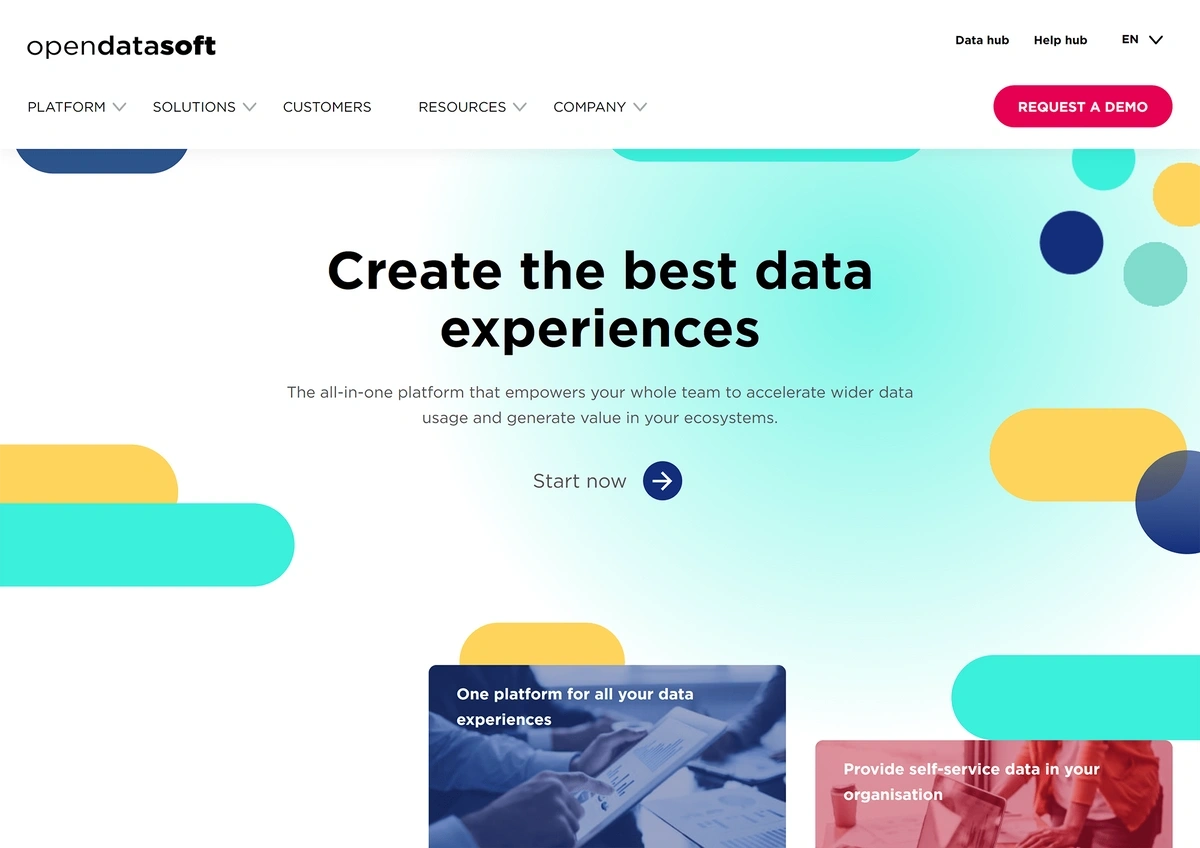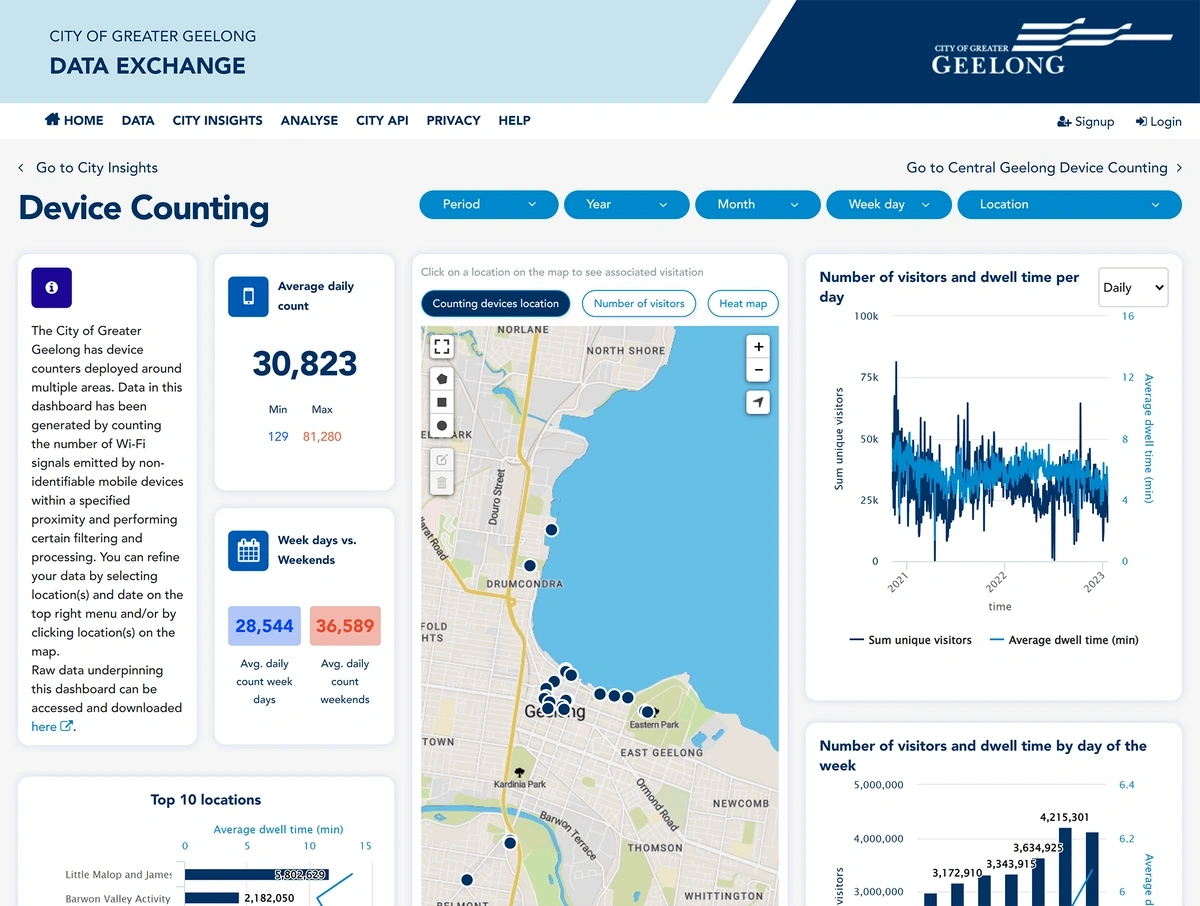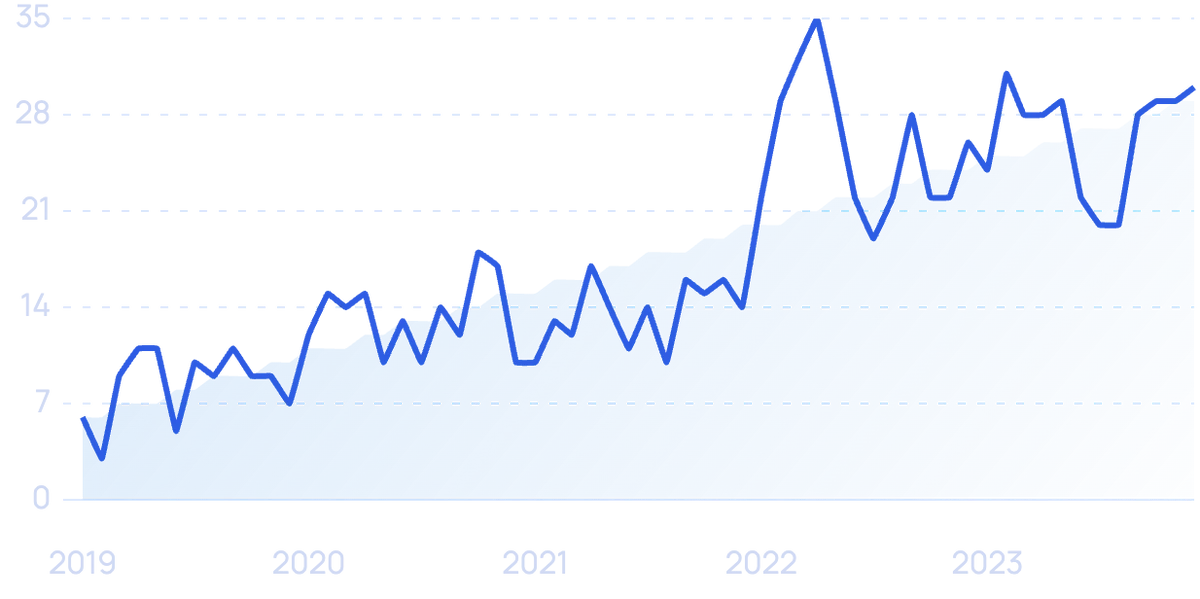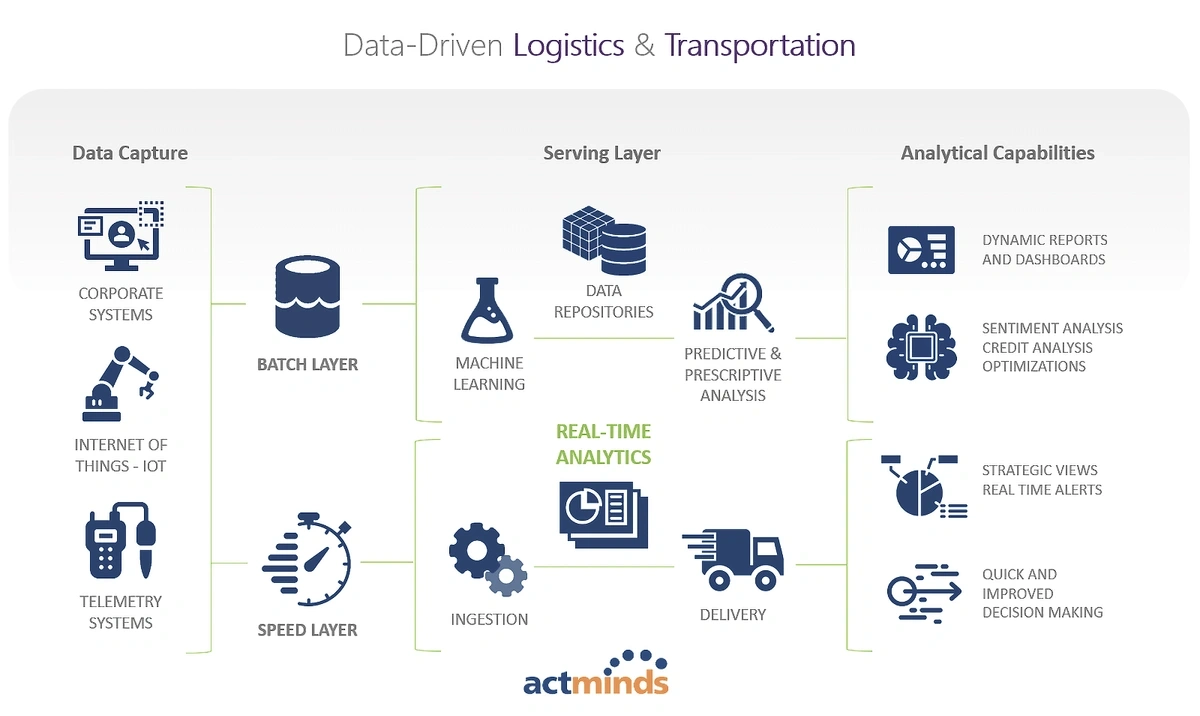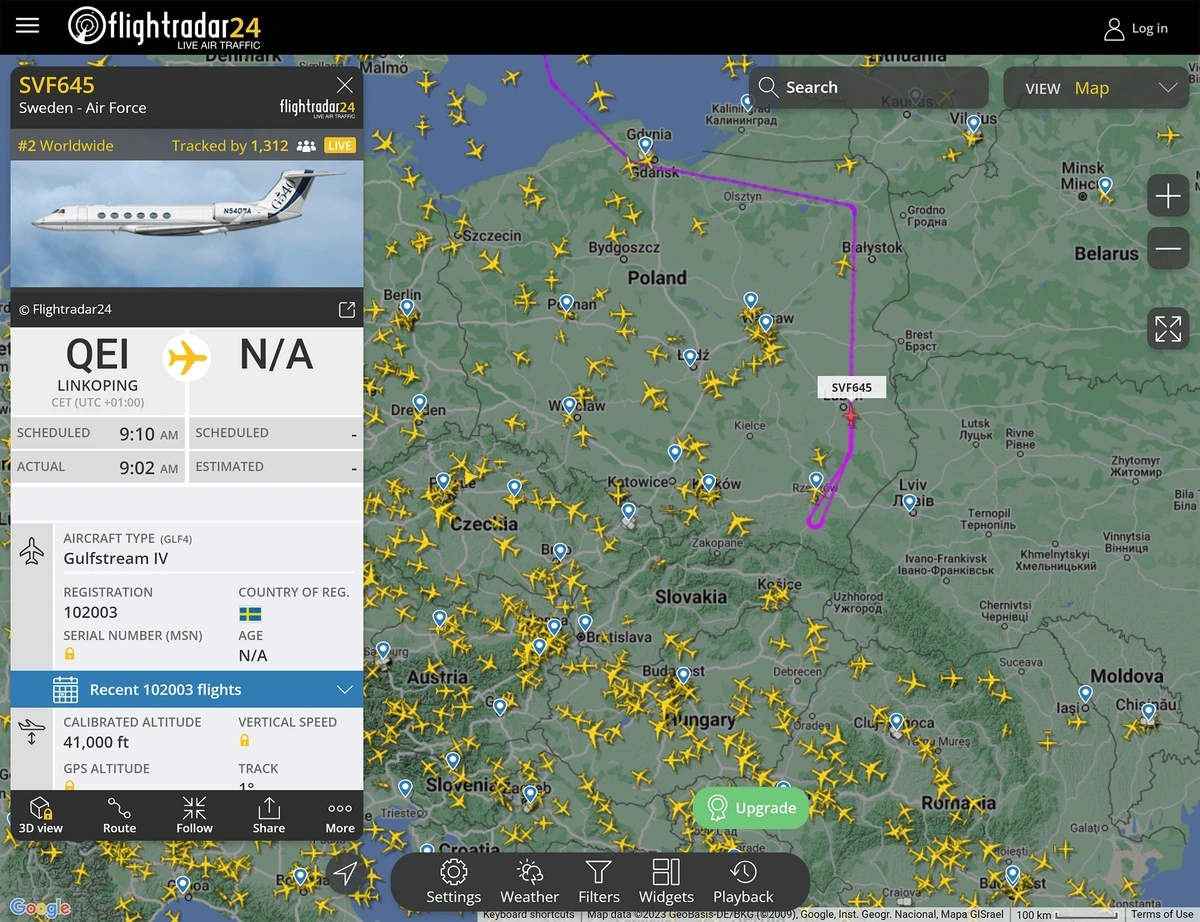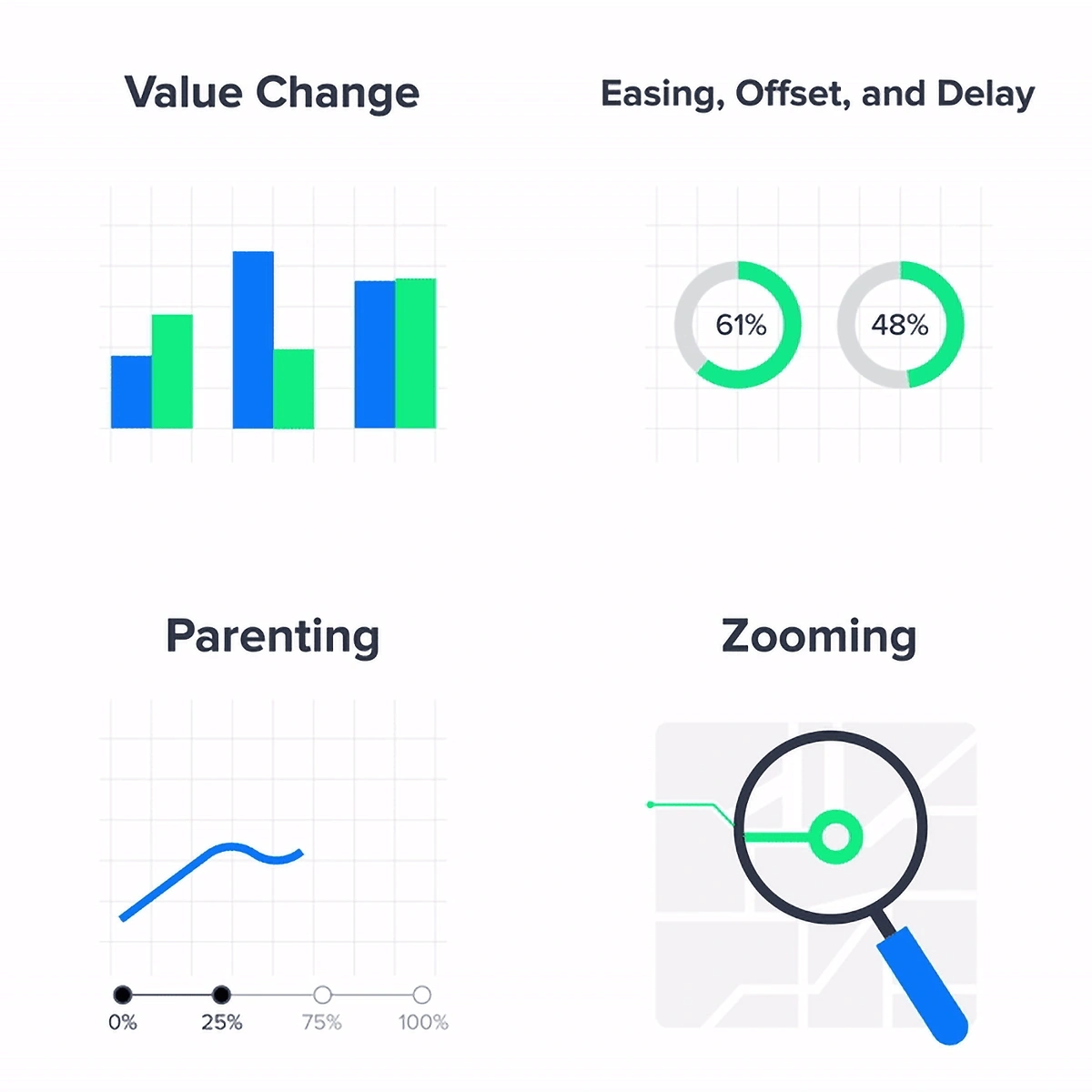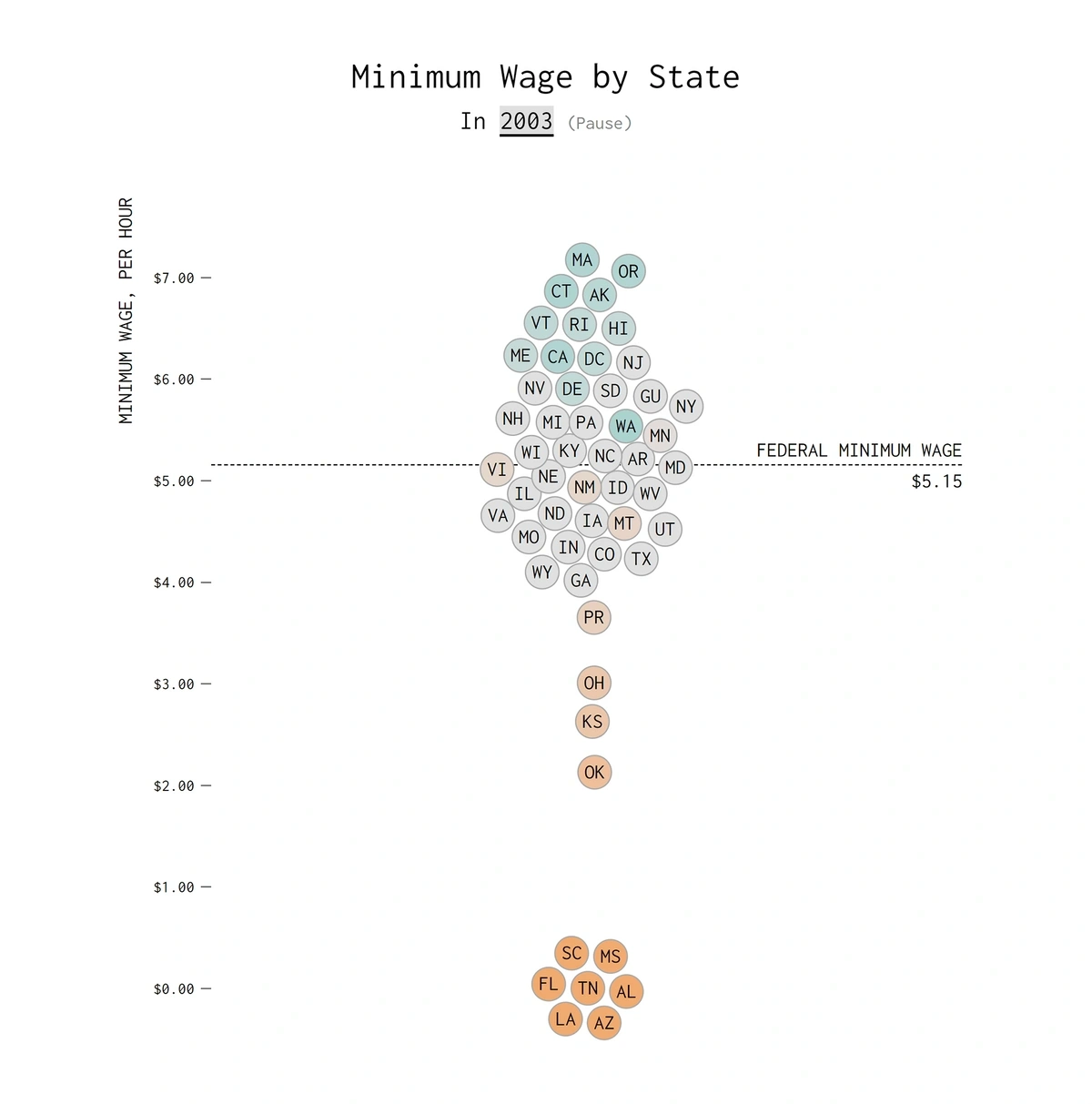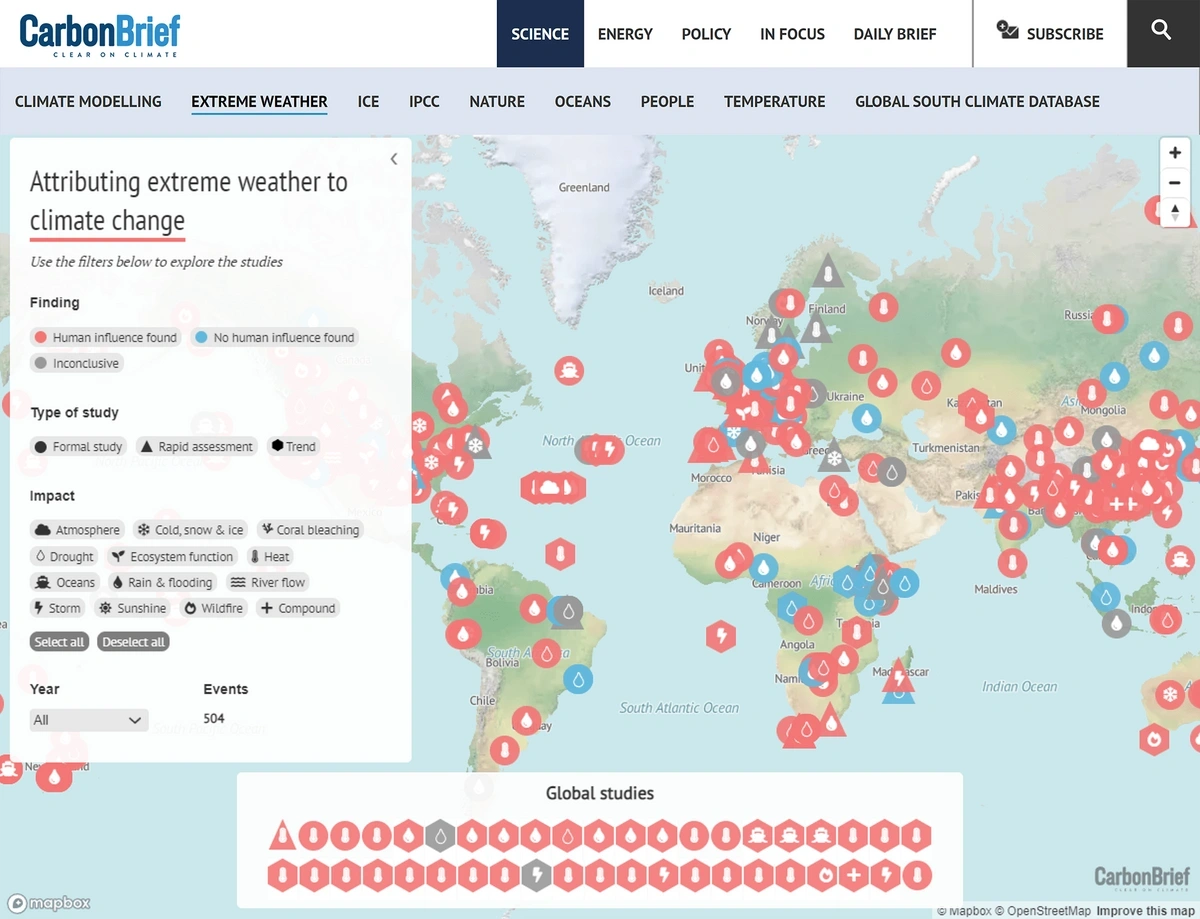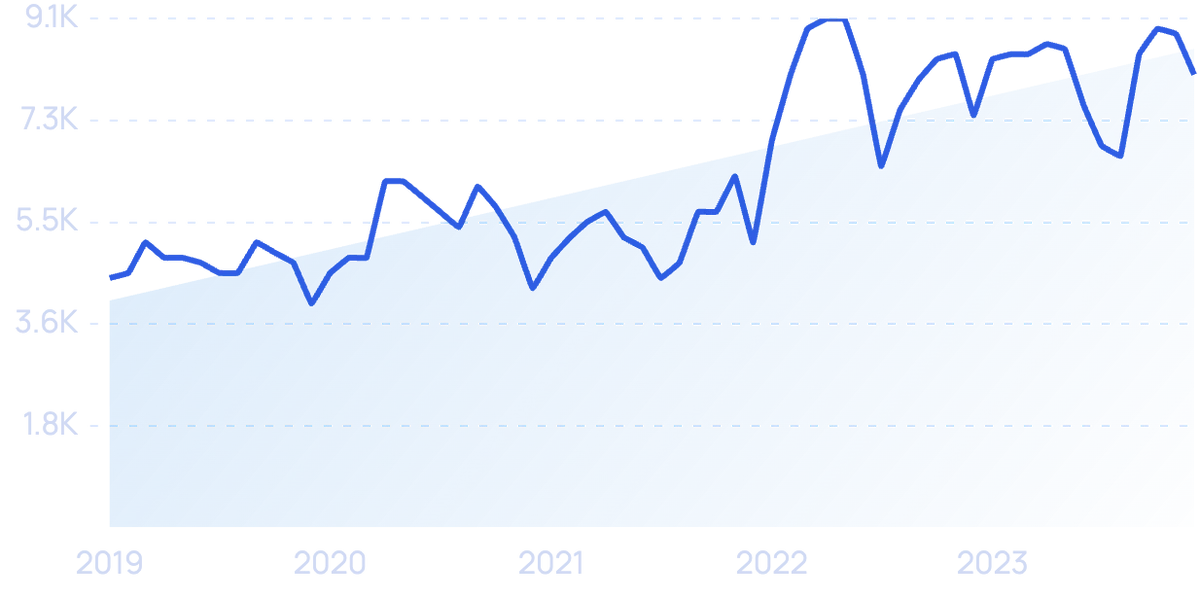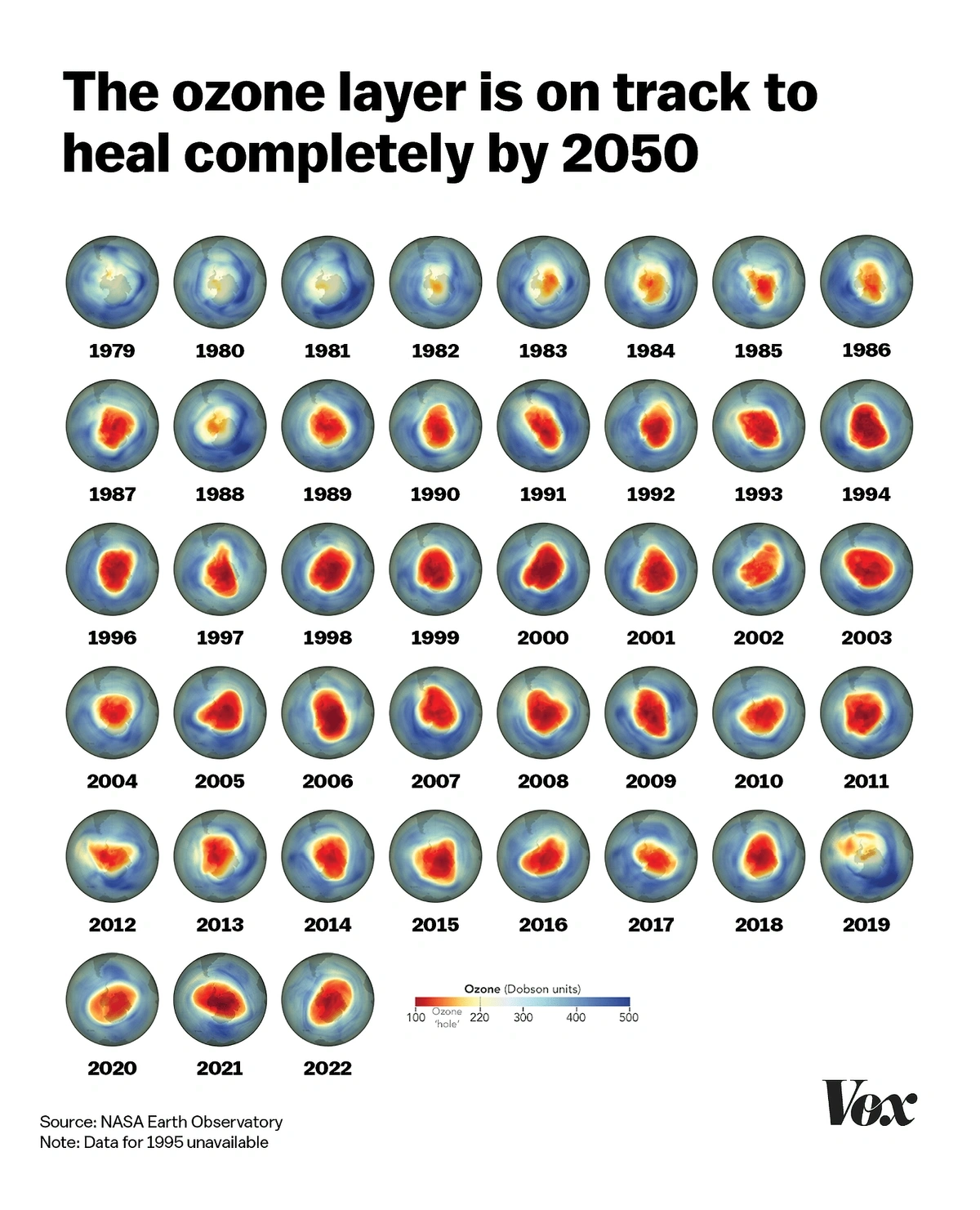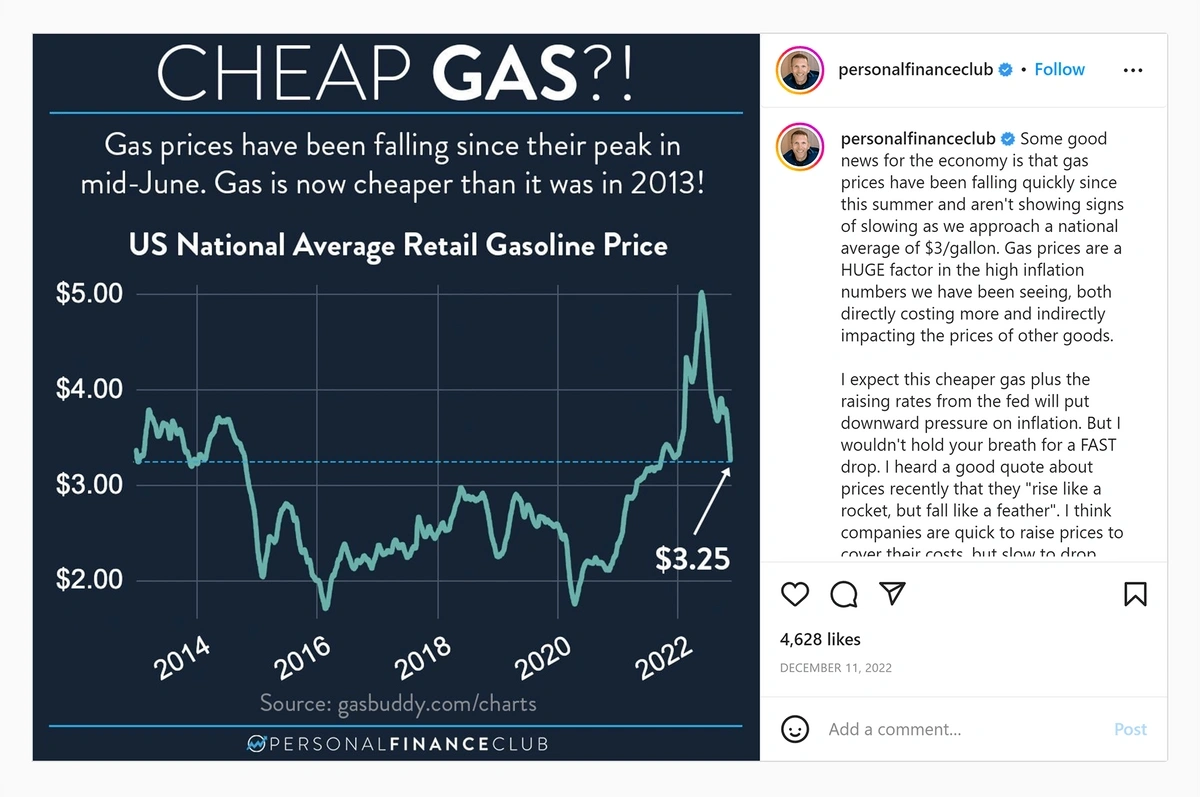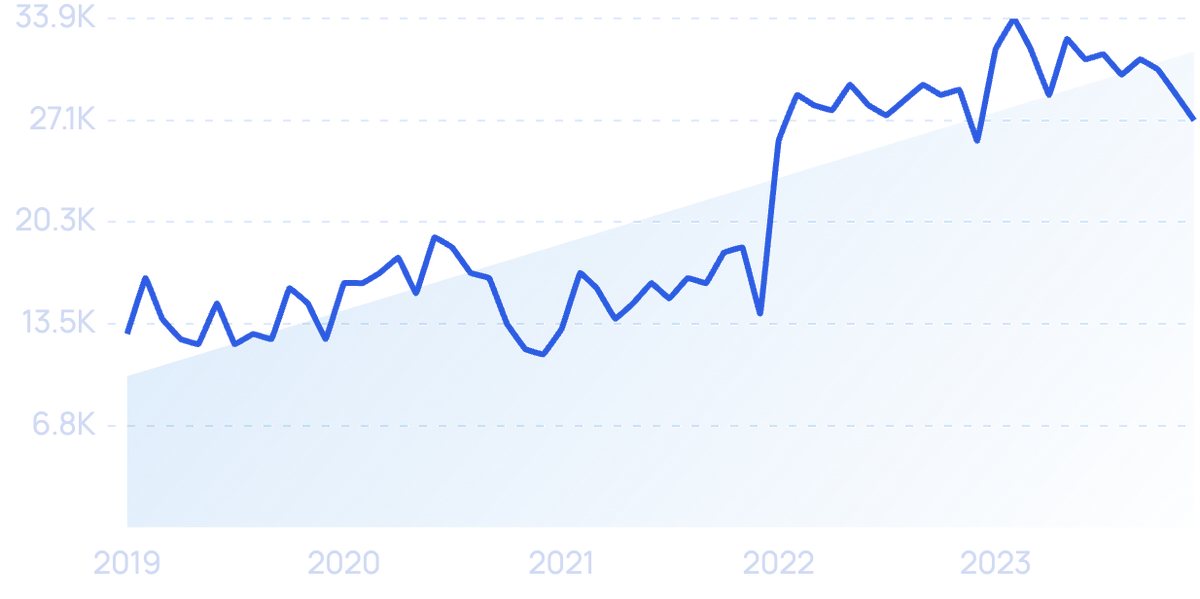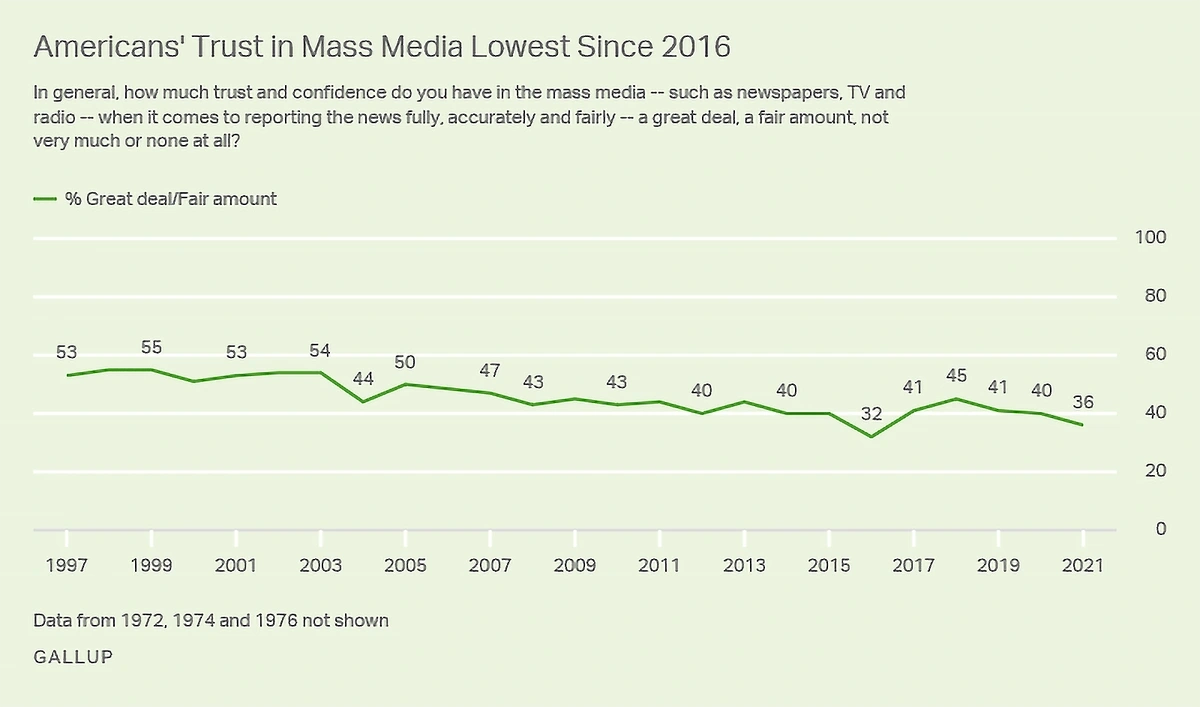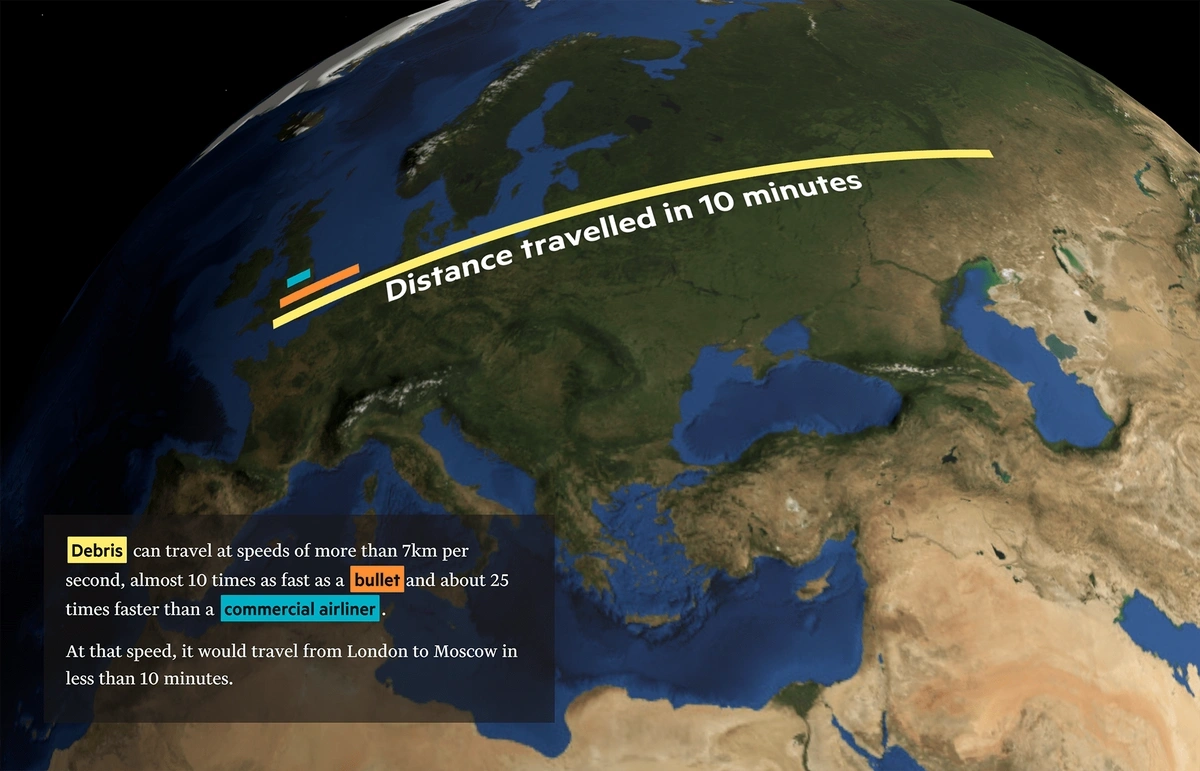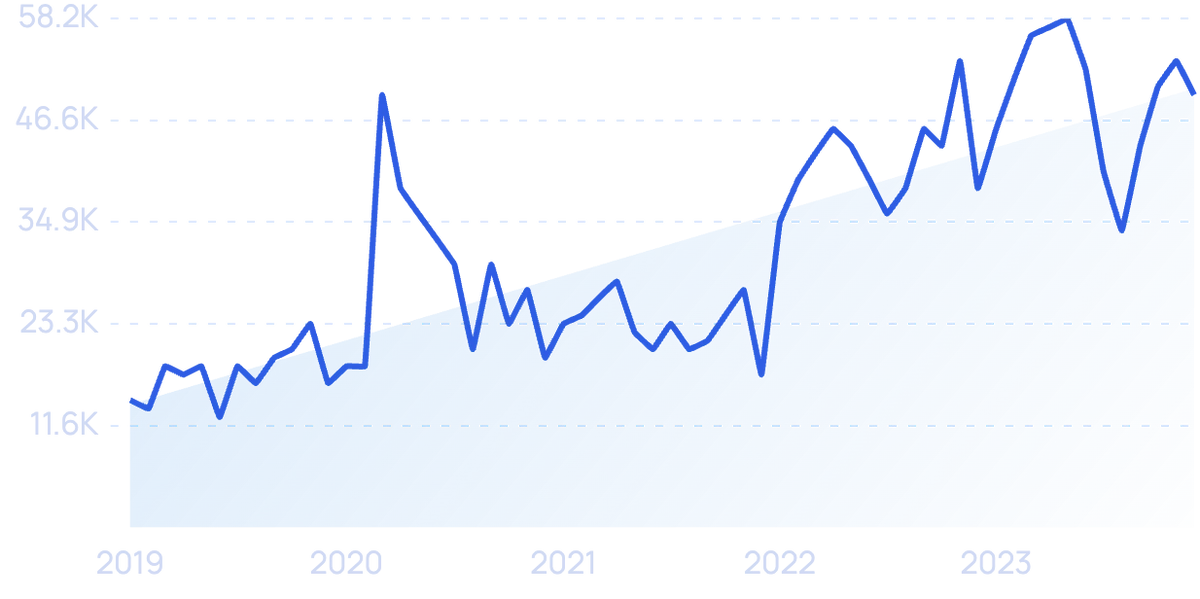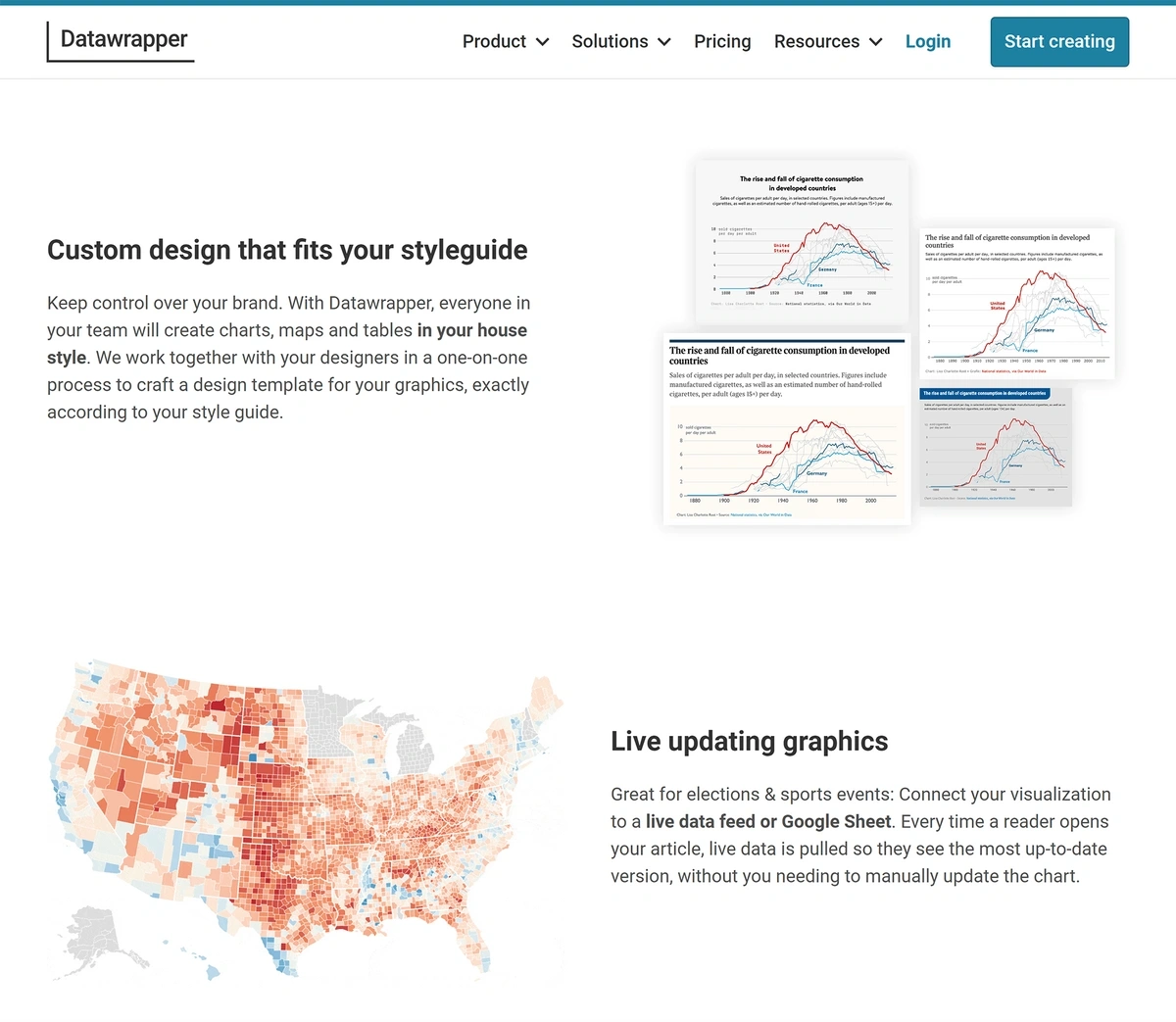As businesses seek to capitalize on the massive amount of data they’re collecting, data visualization is becoming a critical task.
These visuals provide an efficient way for non-technical users throughout an organization to understand data. Without them, teams and leaders remain uncertain about the data and they’re unable to take advantage of actionable insights.
The data visualization market is expected to reach a value of nearly $20 billion by 2031.
Read these five trends to see what’s driving the market’s growth and learn what opportunities lie ahead for data visualization.
1. Data Democratization
Put simply, data democratization means that data access is open to all users.
Search volume for “data democratization” shows a 117% over 5 years.
In a company, this means that IT doesn’t need to be involved in every data-related action. Users throughout the organization can access data, run analyses, and create data visualizations on their own.
This all-access pass to data means that employees have the information they need to make business decisions with a solid foundation, and they can create the visualizations they need to communicate those business decisions to company leadership.
In a recent survey of 500 business leaders, 90% said data democratization was a priority for their business.
No-code/low-code solutions are a central component of enabling a company’s employees to create their own data analysis and visualizations.
These solutions give users with little to no coding experience the opportunity to create tailored data experiences.
Opendatasoft provides a no-code data experience platform to companies around the world.
Their platform gathers data from multiple sources, organizes it, and enables users to create visualizations to share internally as well as externally.
Opendatasoft allows users to create responsive data visualizations.
The city of Geelong, Australia, utilized the Opendatasoft platform to create a data analysis and visualization platform that’s accessible to all citizens and businesses.
The data exchange tracks information like weather, animal migration, tree removal, parking lot occupancy, and more.
For example, a visualization page dedicated to counting Wi-Fi devices in the city shows a map, counters, bar graphs, and other visualizations that can be set to specific locations and dates.
The device counting data visualization shows multiple metrics and offers customization options.
Data democratization is also empowering ordinary citizens to analyze data and create visuals like never before.
Tableau offers a no-cost platform where anyone can create data visualizations.
Search volume for “Tableau Public” is up more than 80% over the past 5 years.
Aptly named Tableau Public, the no-code platform is used by millions of people, and the company says it’s the largest repository of data visualizations in the world.
A sample data visualization posted on Tableau Public.
2. Real-time Visualization and Analysis
Gaining insights from data in real-time provides companies with a concrete advantage over the competition.
Searches for “live data analysis” are up 342% over the past 5 years.
In a 2022 survey from DataStax, 78% of participants said real-time data is a “must-have”, and 71% said that revenue growth is directly impacted by real-time data.
Organizations with real-time data visualization can make strategic decisions quicker, manage risk more efficiently, and recognize emerging opportunities earlier than other companies.
Business users can also design dashboards that combine real-time data with historical data to provide an even more powerful analysis.
Real-time visualization is especially important in industries like the logistics and shipping sectors.
Real-time data is captured and presented via a dynamic dashboard.
Visualizations can combine real-time data from several sources to determine current locations, expected delivery times, and potential problems associated with shipments.
FlightRadar24 is one of several online platforms that provide real-time and historical flight tracking data.
By utilizing more than 20,000 specialized radar receivers and data feeds across the world, the platform is able to track millions of aircraft positions per day.
This data is useful for commercial applications in the aviation, insurance, and asset management industries.
But this type of data visualization is also becoming popular among the general public.
In August 2022, more than 2.92 million people live-tracked at least a portion of House Speaker Nancy Pelosi’s flight as she traveled to Taiwan.
In another example, Dublin City University in Ireland is using data visualization to enable autistic students to better navigate campus.
IoT sensors, environmental sensors, and digital crowd-counting data feed into the platform, which can be accessed on students’ mobile devices to create a real-time picture of sensory hot spots on campus.
3. Animated and Interactive Visualizations
Animated and interactive data visualizations give the viewer the opportunity to understand how data points have changed over time.
This type of visualization enables creators to tell stories and illustrate points without having to use excessive text. That’s a key feature considering the short attention span of individuals in today’s society.
Animated visualizations also stand out among other digital content and engage viewers better than static visualizations or text.
In fact, approximately 65% of the population prefers to learn visually and retains information best when it’s presented in a video format.
Basic data animations have been around since the early 2010s, but they focused on flashy animation and imprecise visuals.
Recent visualization techniques are much more refined. Data creators now have the ability to design 3D zooming experiences, offset and delay information, and show data relationships via parenting.
The latest visualization techniques use animation to provide an increased understanding of data.
Nathan Yau has a PhD in statistics and visualization from UCLA, and he frequently updates his blog with mesmerizing data visualizations that display the latest trends and design techniques.
He recently posted an animated visualization showing how much the minimum wage has increased in each state since 1968.
The animation in this visualization tells the story of minimum wage legislation in each of the 50 states over a 53-year period.
In another example, the Carbon Brief created an interactive data visualization that presents study data regarding the relationship between extreme weather and climate change.
Users can click on a map point to access data and study information. They can also filter the visualization by event, research findings, year of event, and other metrics.
This interactive data visualization gives users the opportunity to explore large trends and drill down into specific research studies.
4. Data Visualization Content on Social Media
Data visualization and animation are especially prevalent in social media posts.
Brands are utilizing visualizations to stand out in a sea of text and persuade users to stop scrolling.
Successful visualizations are able to spark engagement among a brand’s key audiences.
Searches for “social media engagement” jumped in 2022.
A bonus of posting data visualizations on social media is the potential reach.
Visual content, especially visualizations like infographics, is widely shared on social media.
One social media analysis looked at 100 million social shares and found that infographics rank number one.
Infographics are shared more than other content types on social media.
When it comes to data charts, research has shown that people focus on the title first and are most likely to recall the title long after they saw the post.
Because people scroll through social media so fast, (Facebook says users only spend 1.7 seconds on a post while they’re scrolling on a mobile device) businesses are becoming even more deliberate in making their headlines clear and enticing.
A recent example of this trend can be seen in the Facebook and Instagram feeds of the news outlet Vox.
Their bold yet simple visualizations feature clear titles and interesting graphics.
Vox’s data visualization of the ozone layer features a simple, eye-catching design.
This visualization on Instagram explains the impact of daylight saving time.
These types of visualizations can also build credibility for brands.
Organizations and individuals are using high-quality data and eye-catching visualizations to tell consumers that they are trustworthy experts in their field.
Jeremy Schneider is one example.
In 2004, he founded an advertising network and sold it 11 years later for a million-dollar profit.
Now, he uses his Instagram feed to communicate financial data and recruit customers for his financial literacy course. It’s brought in $1 million since it turned profitable in October 2020.
This data visualization utilizes an engaging headline and a clear line graph.
5. Data Storytelling
An emerging trend in the field of journalism is using a combination of text, data, and visuals to make a story more powerful. This new wave of reporting is called data storytelling.
Searches for “data storytelling” are up nearly 111% in the past 5 years.
Mistrust in the media, increased amounts of data, and consumers’ desire for immersive digital experiences are all feeding into this trend.
Only 36% of Americans trust the media, which is leading news outlets to publish more objective, data-focused stories.
News outlets are using data visualization to communicate facts in an honest and transparent way.
They’re also using data storytelling to attract internet users who have thousands of choices when it comes to getting their news.
The Financial Times published a feature story in June 2022 that relied on data storytelling to reveal the truth about space debris.
As users scroll through the piece, blurbs of data appear alongside a rotating Earth and satellites.
The feature uses charts, graphics, simulations, and other visualizations to tell a story about the dangers of space debris.
Datawrapper is one of the top tools journalists are using to embed graphics and build visualizations.
Search volume for “Datawrapper” is growing.
News organizations like The New York Times, Reuters, and the AP regularly use visualizations created in Datawrapper. In total, the company has more than one million published visualizations.
Datawrapper’s visualizations can be customized to specific news outlets and desktop, mobile, or print offerings.
On a smaller scale, business users are turning to data storytelling to communicate risks and opportunities to company leaders.
Data visualization is a critical component of data storytelling.
By creating a story to go along with the data and visualizations, business users can emphasize specific highlights and bring the data to life in a matter of minutes.
Gartner predicts that this trend will continue well into the future with storytelling becoming the most widespread way to consume data analytics by 2025.
— Tessa Davis (@TessaRDavis) November 23, 2022Bad data presenting: "Here are all my numbers. I'm very clever. Got it?"
Good data presenting: "Here's the story my numbers tell and THIS is why you should care about it".
Data storytelling is the difference between audience action and audience confusion.
Tessa Davis explained the importance of data storytelling in a recent Twitter post.
Conclusion
That wraps up our list of the five most important trends impacting data visualization right now.
As the amount of available data grows, so does the number of people using it. Everyone from employees to journalists to ordinary citizens are becoming interested in analyzing data and presenting their findings with engaging graphics.
Data visualizations were once a tool reserved for IT, but now individuals are using them to increase brand credibility and drive business decisions.
We expect to see an even more drastic increase in the usage and engagement associated with data visualizations in the months to come.

